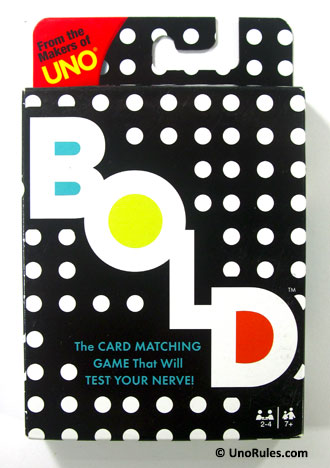
Bold is a fun and interesting card game by Mattel, and this game involves matching certain elements in the cards, scoring points for successful match-ups, and earning enough points to eventually win the game. It is a nice afternoon game for anywhere between 2 to 4 players, and the rules are easy enough to learn quickly. So, want to learn how to play Bold? Let’s get started learning the Bold rules below!
Matching the Elements in Bold
In Bold, there are 4 elements that you can potentially match up. In this regard, it is quite similar to Uno. The four elements are:
- Color
- Container
- Size
- Pattern
Setting Up Bold
Each deck of Bold has only 81 cards plus 4 scoring cards. This is perhaps why the maximum number of players is limited to 4 (the total number of cards are not that many). Before starting the game, shuffle the cards well, and then place them down in a 5×4 grid as shown in the image below. There should be 5 cards across in 4 rows down, while the remaining 61 cards are placed to the side as the Draw pile.
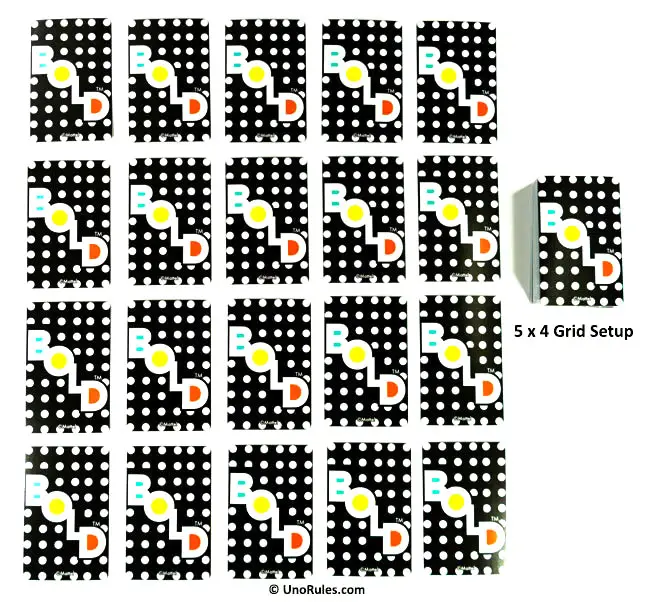
The 4 Elements that you can match up are as shown below:

3 types of color in Bold. Cards can be matched by color.

3 types of containers in Bold. Cards can be matched by container type.
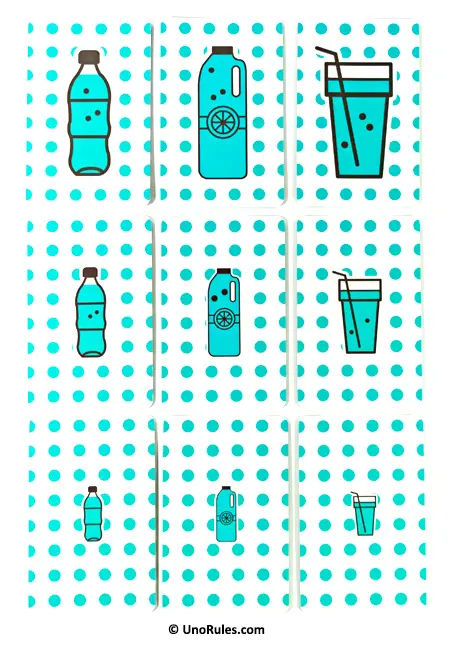
3 sizes in Bold. From Big (top row) to Medium (middle row) to Small (bottom row).
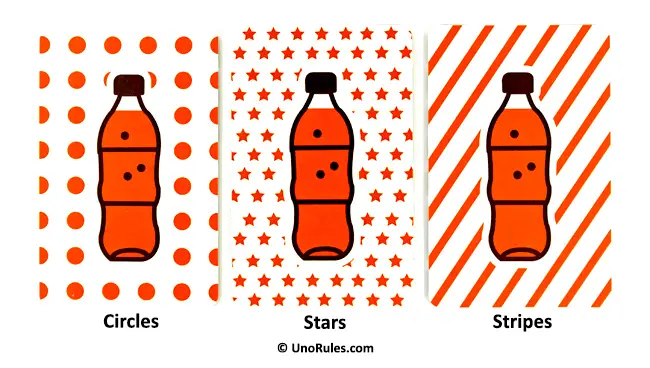
3 types of patterns in Bold. Cards can be matched according to pattern type.
Gameplay for Bold
The player to go first is usually the youngest player (although you can choose anyone), and the play then proceeds in a clockwise direction.
Turn up 2 cards from the grid. See if they match in any way via the 4 elements. If there is even 1 match, you can either end your turn and collect those cards, or continue playing (more explanation below).
If there is no match, your turn is over. You must turn those cards face down and you collect zero points. Play then moves on to the next player in turn.
IF there is a match, you can choose to end your turn and collect your points or continue playing by turning over 1 new card. This next card must match at least ONE element of the previous cards. If there is match, you can keep going by being “bold” and turning over 1 more card again and again until this run ends. If the run ends, you have to turn over back the cards, and receive NO points.
This is like a gamble, the longer your “run” continues, the more points you can collect if and when you decide to end your streak and collect your points. But if your run ends before you call it quits, then you get no points for it and your turn ends. The most important point to remember is this – The same elements must match up in common for ALL the turned up cards.
Example of how to match the cards:
Let’s say the first card you turn over is a Small Glass Container, with the Color Blue, and the Circles Pattern. The next card you turn over is a Big Glass Container, with the Color Blue, and the Stripes Pattern. This means, you have a match in the Container and Color elements, but not in Size and Pattern.
At this point, you decide whether to continue turning over a new card, or collecting points and ending your turn. If you choose to collect points, then you simply collect those turned up matching cards and place them aside (more on scoring below) in your collection.
If you choose to continue (and risk forfeiting any points), you turn over a new card. Let’s say the card is a Big Glass Container with the Color Red and the Stars Pattern. This means there is still a match for the Container element, but not for the Color element.
At this point, you again must decide to either continue your run, or “cash out” on the points. . You might want to consider settling for the points, as the next card has to match just one more element – the Container element! If so, collect those cards from the grid as your own for now, and replace them on the grid with new cards from the Draw pile. Play then moves on to the next player in turn.
But if you decide to risk it and be bold, and turn over another new 4th card and it is say, a Red Jug Container with Circles, this is NOT a match anymore, simply because it does not match all 3 face-up cards currently.
So unfortunately, your turn ends right there with no points. Turn back those 3 cards face down, and it is now the next player’s turn.
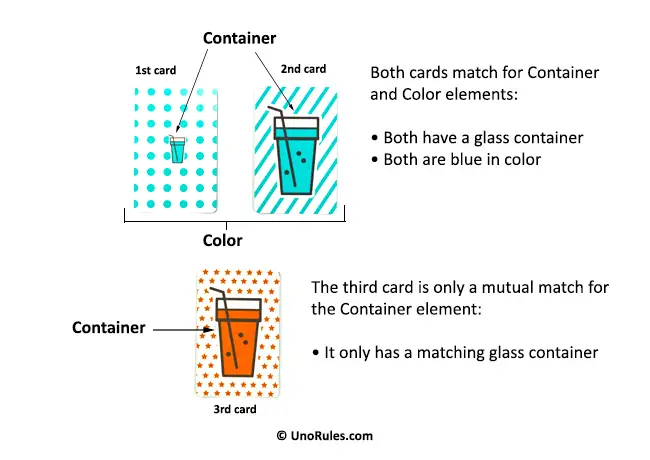
Example of how to match the cards in Bold for 3 cards. The first 2 cards turned up, match via 2 elements, while the 3rd card only matches by 1 element.
Winning the Game
The game ends when the 5×4 grid can no longer be refilled with new cards from the Draw pile to complete 20 face-down cards. All players now count their points and the one with the most points is the winner.
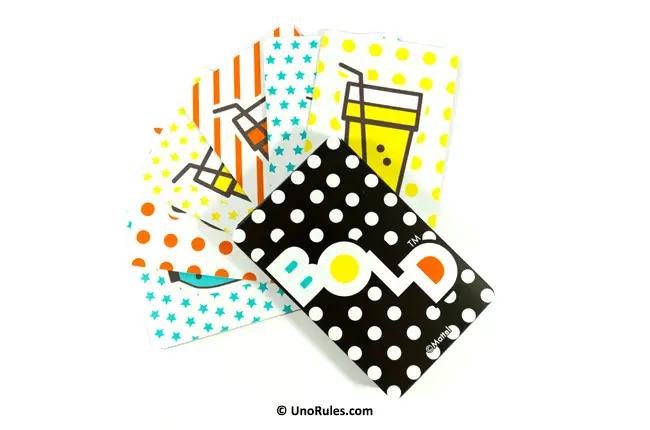
Scoring for Bold
Scoring in Bold is simple. Multiply the number of turned-up cards by itself. If you collected 2 cards during your turn, the points you collect is 2 x 2 = 4. If you collected/cashed out at 3 cards, the score is 3 x 3 = 9. If you were bold enough to collect and cash out at 4 cards, the number of points scored is 4 x 4 = 16. And so on and so forth.
How to keep track of how many cards you successfully collected per turn? Easy. For each time, simply stack each group at right angles of each other so that each group looks separate.
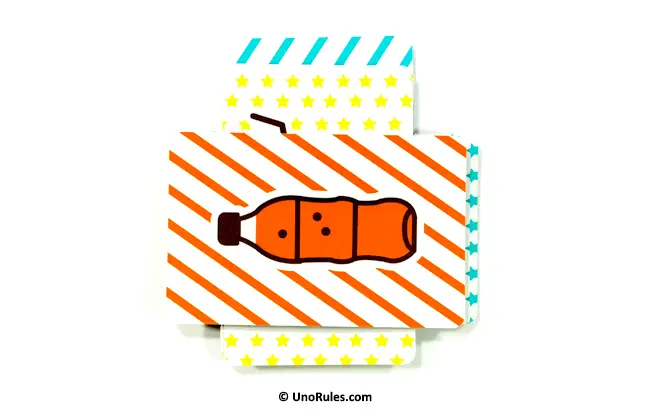
Tip. Stack each group of collected cards per turn at right angles of each other so that they look separate.
Important Tip
Do your best to REMEMBER the location and elements of the cards that were turned over face-up by other players and later turned back face-down again. You can certainly collect the same cards on your turn if the opportunity presents itself! As you can see – Bold is a great game to exercise your memory!